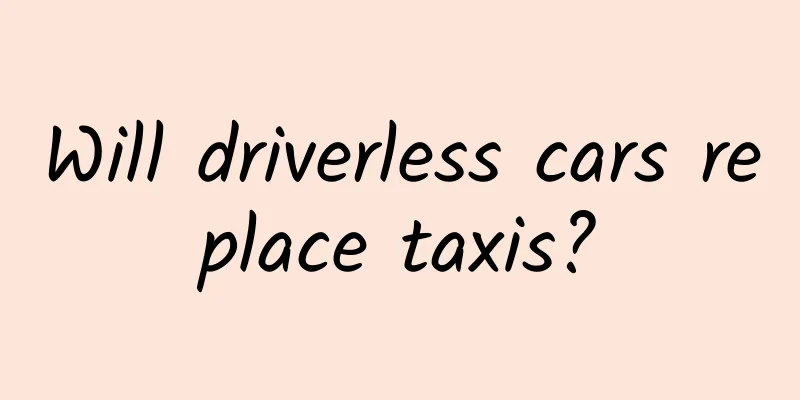Will driverless cars replace taxis?

|
Ride-hailing app Uber announced yesterday that it will work with Carnegie Mellon University to establish the Uber Advanced Technology Center in Pittsburgh. The center's projects include the research and development and design of driverless cars, as well as various automotive safety technologies. At the same time, there are reports that Google is also testing its own taxi app. The decision of the two companies surprised many industry insiders, because Google once invested $258 million in Uber through its own venture capital company Google Ventures, and Google's chief legal officer and senior vice president of corporate development David Drummond had joined Uber's board of directors in 2013. It is reported that Drummond has informed Uber's board of directors of the possibility of Google launching its own taxi service, and Uber executives have also seen screenshots of the user interface of Google's taxi application. We have seen descriptions of driverless cars in science fiction movies or anime more than once, and I think the scene depicted in Mobile Suit Gundam SEED is the closest to reality. In this imaginary world, residents rely entirely on self-driving cars for travel. Users only need to call the car service through a portable terminal, and an unmanned car will stop in front of them. This is a technically possible setting. Self-driving cars that are uniformly deployed by computers completely replace manual driving, allowing self-driving cars to travel on city roads in a manner that is almost like rail transit. Although many people have learned about driverless technology because of Google's research on driverless cars in recent years, in fact, driverless cars are not a recent concept. As early as the 1970s, American and German automakers had already been conducting research on driverless cars, but due to the limitations of the technology at the time, such driverless cars could only simulate driving in an experimental environment, and in many cases they still needed the manual assistance of the driver. The research of automakers on driverless technology is actually based on a very clear purpose - to reduce traffic accidents caused by human error. The ABS (Anti-lock Braking System) that is essential in modern cars is the product of related research. It uses automated means to replace the driver's repeated braking operation to prevent the tires from being locked, thereby effectively preventing the car from losing control and sliding. But what's interesting is that the driverless technology originally developed by car manufacturers for safety reasons has triggered a discussion about its safety in the United States. Although relevant companies have stated that they will not rashly launch driverless cars before the technology is mature, some people have said that even if the driverless technology is mature, they are unwilling to entrust their lives to cold machines. It is difficult for us to say that this idea is wrong. After all, an impersonal machine cannot chat with passengers like a Beijing taxi driver. It is indeed difficult for us to trust a machine without sympathy. For example, in the civil aviation field, unmanned driving technology is very popular. Except for take-off and landing, the unmanned driving system can almost replace the pilot to complete the entire flight. However, in an emergency, people are often more willing to trust the judgment made by experienced captains. Judging from the application of unmanned driving technology by ABS and civil aviation, unmanned driving technology may first be installed on manned driving platforms as an auxiliary safety system. When the driver of the car has a problem (such as drunk driving, drug driving or even sudden death), the driver will take over the driving of the vehicle. Or, under the supervision of the driver, automatic driving can be attempted in specific areas. But when an emergency occurs, I think the driver should still take over the control and the unmanned driving system should provide assistance. After all, human judgment ability often exceeds that of machines. Compared to companies like Google that put technology first, I think Uber is more likely to make achievements in the field of driverless cars. As far as the current situation is concerned, the existing driverless technology has reached a level of practicality, except for being "ugly". This is also the reason why Google believes that its driverless technology will be applied in two to five years. But compared with breakthroughs in the field of technology, I think the greater problem comes from the regulatory level, which is very similar to the dilemma of drone delivery. Uber's advantage is that it is good at combining technological progress with institutional innovation, and it can gain the upper hand in the game with government departments; Google often seems to be too "conventional" to seize opportunities to make breakthroughs. Uber is more capable of promoting innovation in regulatory systems than Google. In this way, Uber, as the terminator of the taxi industry, may also put an end to human drivers! No matter from which level, driverless cars will be a huge revolution. The change in travel mode will deeply affect our lives. But the revolution will not happen overnight, and the transition period in between will be the most difficult period. The adjustment period between society and technological revolution is much longer than the adjustment period between drivers and new cars. Take good care of your driver's license and stop violating traffic rules. After all, we may be the last generation to master the skills of driving a motor vehicle. As a winner of Toutiao's Qingyun Plan and Baijiahao's Bai+ Plan, the 2019 Baidu Digital Author of the Year, the Baijiahao's Most Popular Author in the Technology Field, the 2019 Sogou Technology and Culture Author, and the 2021 Baijiahao Quarterly Influential Creator, he has won many awards, including the 2013 Sohu Best Industry Media Person, the 2015 China New Media Entrepreneurship Competition Beijing Third Place, the 2015 Guangmang Experience Award, the 2015 China New Media Entrepreneurship Competition Finals Third Place, and the 2018 Baidu Dynamic Annual Powerful Celebrity. |
<<: Guangdong TV and Youpengpule join hands to create a new OTT model?
>>: Behind WeChat’s crazy “ban”: the pain of WeChat Pay
Recommend
Research shows that if a dog tilts its head, its IQ is not a problem!
Editor: Qizai Editor: Li Xuewei Layout: Li Xuewei...
How to use Tencent’s information flow advertising to win the Double 11 battle for traffic?
In the tenth year of Double 11, more e-commerce c...
2021 China Advertising Industry Cooperation Ecosystem Report!
The cooperative relationship between advertisers ...
These symptoms on your feet actually indicate that your blood sugar has been above the normal level for a long time? Doing these two things can reverse it!
Well-known Diabetes is becoming more and more com...
The "Little Yellow Car" is addicting! Why do live shopping make people spend a lot of money without realizing it?
Why does live shopping make people spend a lot of...
New national standards accelerate the reshuffle of the air purification industry. Ablecloud helps Yadu transform to intelligence
Winter is the season when smog is most frequent i...
12 sales promotion tricks, learn them!
Last week, a friend on Zhihu asked Su Yan a quest...
Song Ziwei joins the company and NIO releases mobile phones. She insists that she is ready to make a mobile phone.
On September 19, Li Xiang posted on Weibo about t...
Review: A complete event operation planning plan is like this
The end of the year is approaching and various ac...
Honda: Honda's sales in November 2023 were 106,654 units, a year-on-year increase of 36.5%
According to media reports, Honda announced its s...
What is a high-quality Baidu promotion account structure?
1. Overall flattening That is, don’t just establi...
New use for iPhone 6: distinguishing real breasts from silicone ones
A foreign girl uploaded a video of her breasts, w...
From an operational perspective, let’s talk about the user incentive system of financial products
The user incentive system means that while the pr...
Is there any shortcut to start a short video business? Is it possible to make short videos quickly?
It seems to be human nature to be eager for quick...
up to date! Data rankings of 60 information flow advertising platforms!
Today I bring you the latest traffic rankings of ...









